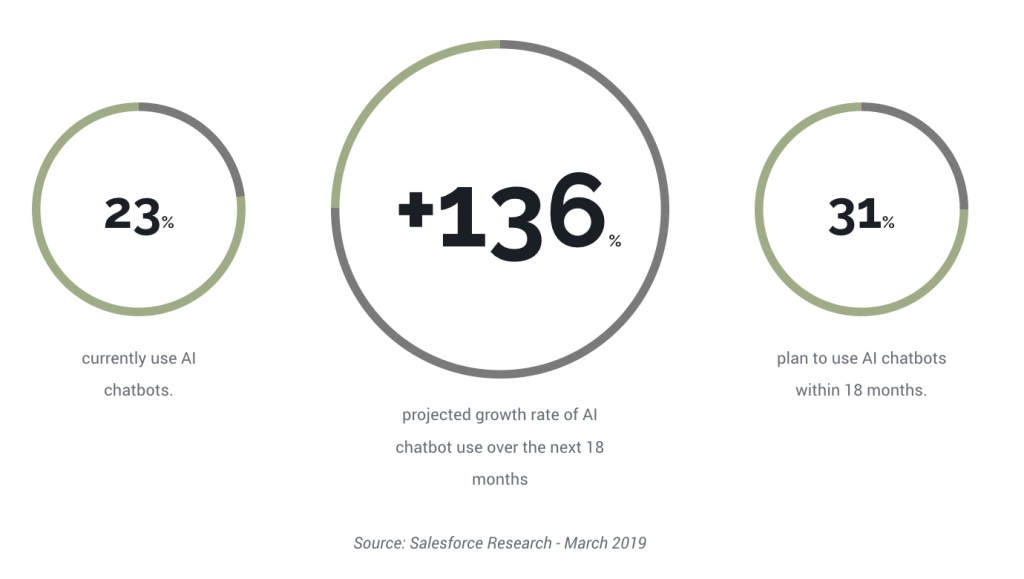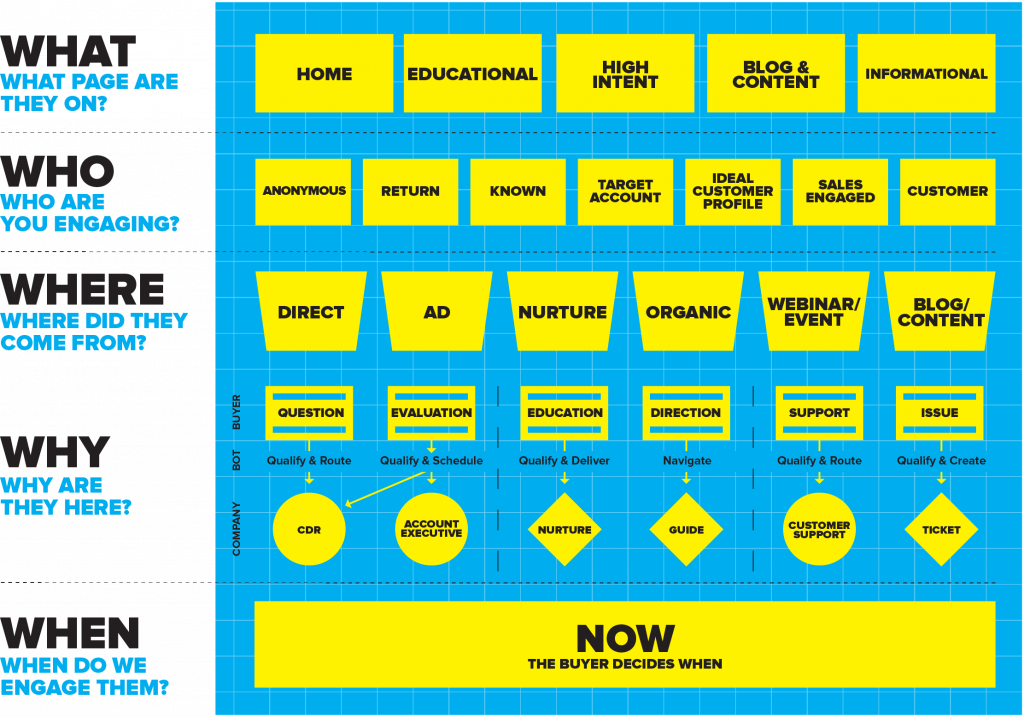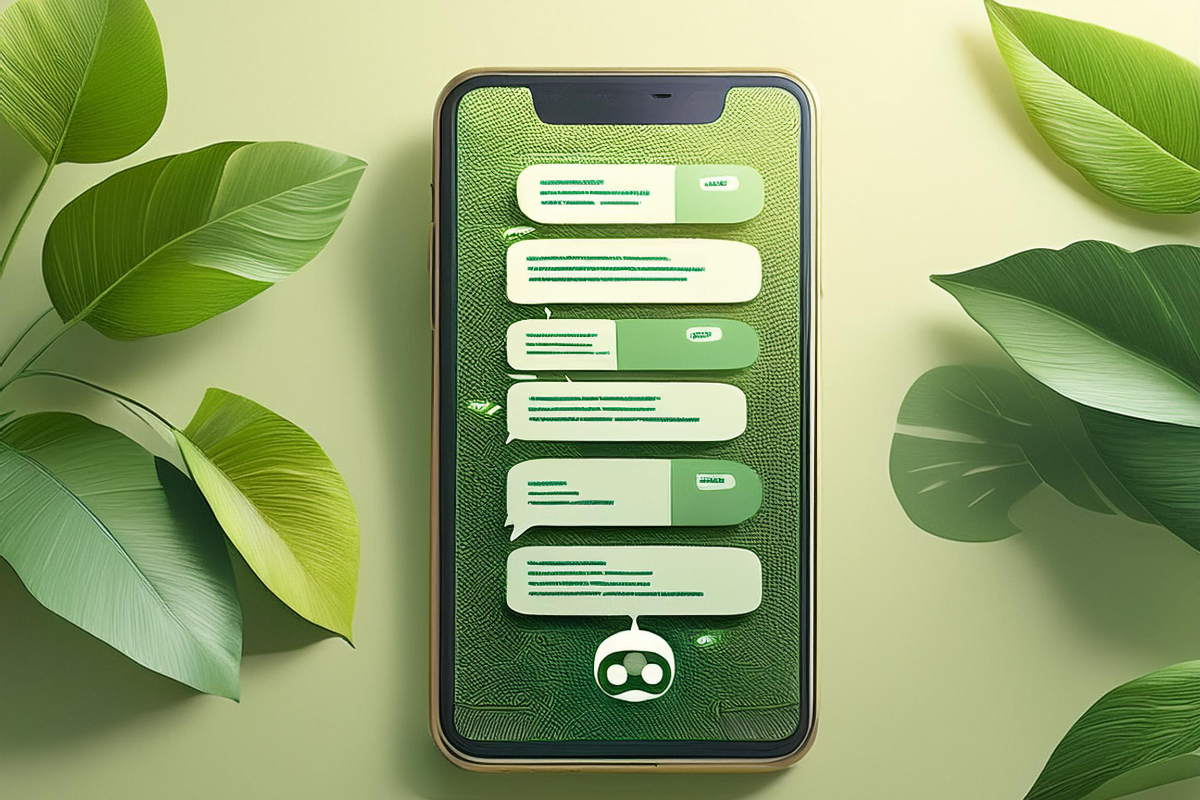The ultimate goal for marketers is to offer the best experience ever. Conversational marketing is the new trend: learn how using chatbots on your website and apps can definitely support your growth.
Conversational marketing, the new trend
In 2018, Google unveiled a surprising keynote, in which an AI assistant was able to book meetings in the background accordingly to your availability. And at the same time, find the best restaurant and book it for you, while serving you with the latest informations, weather forecast and playing your favourite songs.

AI bots are already there: 23% of organisations are already using AI chatbots on their website. And after the trendy “inbound marketing”, conversational marketing looks like the big next thing. In March 2019, the NY based SaaS company Drift went for a huge campaign around their new book “Conversational Marketing”.
How to use conversational marketing
When engaging a prospect or consumer, a key fact you need to have in mind: consumers are impatient. In fact, most of them will be completely lost after 10 minutes. A recent Hubspot research was highlighting that an immediate response was important:
– for 82% of consumers, in case of a marketing or sales question
– for 90% of consumers, in case of a support question
In the art of producing the perfect conversation, Drift designed a 5W matrix, leading the basis for conversational marketing.

In addition to this practical framework, some guidelines to have in mind:
– knowledge base. If you want to have a good conversation, you need to know – at least a little – who you are talking to. So the first basic to have is to use the data you already have to customise your conversations, or use the first triggers for qualification.
– to the point. The 2nd basic is to keep your chat to the point. Sure, using giphys, long articles, intermediary questions can help. But they need to come only when the consumer is not in a hurry.
– service. The main objective of a chat is to serve the consumers, be helpful, reply and execute actions on his/her demands. Use your chat bots to empower your ability to serve consumers.
– athenticity. Last but not least, do not forget that bots, even automated are part of your company. They deliver the messages of the company, bring services and product explanations. So you need to ensure to remain authentic in your scenario.
Which returns?

Going in for chatbot technologies need iterations. You’ll probably be able to start with a minor cost, but if you make it a key element of your contact strategy, then you have to compute the returns on investment.
A simple formula that we use for calculating the ROI of chatbots:
ROI = Added value + Brand awareness generated – Cost of technology – Agent costs.
Don’t forget that such enhancements will also help supporting your growth, which means you will have to scale the revenue / cost model. The latest trends show that consumers are willing to use more and more bots for interactions, so you have to take into account a fast growth in the number of queries.
Which chatbot platforms?
Good news is that bots solutions and SaaS are already widely available on the market. Before rolling out the most advanced bots, our advice is to start testing the basic and free ones.
A short selection of chatbot platforms to start with:
– Drift is a SaaS specialised in conversational marketing. Their top-end solution goes with a licence fee of $500 a month, but they also offer a first free version of their powerful AI bot.
www.drift.com
– Hubspot Marketing Free equally onboards a free chatbot.
www.hubspot.com
– IBM Watson also offers a free version, with a WordPress plugin.
www.ibm.com/cloud/watson-assistant/






